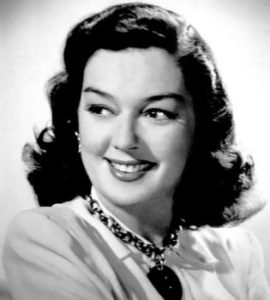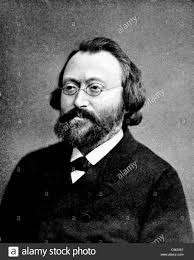REVIEW POTPOURRI – Rimsky-Korsakov, Janacek, Tom Petty, and Little Jimmy Dickens
 by Peter Cates
by Peter Cates
Rimsky-Korsakov
Scheherazade
Seiji Ozawa conducting the Boston Symphony; Stravinsky: Firebird Suite-Lorin Maazel conducting the Berlin Radio Symphony; Khachaturian: Gayne Ballet Suite excerpts- Gennady Rozhdestvensky conducting the Leningrad Philharmonic; Deutsche Grammophon- 413 155-4, 88 minute cassette, from 1960 and 1978 original tapes.
The exotic, very listenable and ever popular Scheherazade has received a deluge of recordings since the beginning of records; conductor Andre Previn once commented on its popularity among musicians as the reason for the high quality of most recordings, as opposed to other frequently recorded pieces.
Seiji Ozawa conducted a nice performance with the Boston Symphony back in 1978 that is part of the above tape, along with 2 other items, from different conductors and orchestras- namely the Stravinsky Firebird Suite and Khachaturian Gayne Suite. This cassette of 88 minutes of great Russian orchestral music may be deleted but it often shows up at used record stores and thrift shops and on Amazon.
Tom Petty and the Heartbreakers
Mojo
Reprise-523971-2, CD, recorded 2010.
Tom Petty (1950-2017) was, I confess, one artist I had little familiarity with before hearing this CD. And it is one great collection of 15 songs that are most definitely rock, but exciting, musically satisfying rock that will withstand repeat hearings, unlike most other albums of the genre.
One powerful, moving track is the last one, Good Enough, about the narrator’s past love for a woman who had the kind of allure that would consume one’s soul – hence the reason to finally cut her loose or be destroyed:
“God bless this land/God bless this whiskey/I can’t trust love/It’s far too risky/If she marries into money/She’s still gonna miss me/And that’s good enough/Gonna have to be good enough.”
Janacek
Slavonic Mass
Bretislav Bakala conducting the Brno Radio Symphony Orchestra, chorus, and soloists; Urania URLP 7072, 12- inch LP, recorded early ‘50s.
Leos Janacek (1854-1928) was to 20th century Czech classical music what Antonin Dvorak was in the 19th century – two composers who carved a unique importance in their country’s cultural life that prevails to this day.
During his early years, Janacek displayed talent in playing piano and organ and conducting choirs. For a while, he was a music critic but got into trouble with some powerful institutions because of his very severe, outspoken opinions. Thus he practically starved for a few years. Eventually, he found work as a conductor and established a music conservatory in the Czech city of Brno, where he spent upwards of 40 years teaching, researching and composing.
His compositions began flowing in 1904 with the opera, Jenufa, when he was already 50. But it was another 12 years before it became an international success and brought fame to its composer. Other works followed, firmly establishing Janacek as a major figure of his time.
The main reason for the popularity of his music was its wild, very exciting use of irregular, complicated rhythms and exotic half-melodies. Many listeners, including myself, were grabbed by these works when hearing them for the first time, without knowing or even caring what was happening. His Sinfonietta is an excellent introduction and can be heard on youtube in a number of different performances.
The above Slavonic Mass is similarly characterful, far from being the typical solemn affair that Brahms, Mozart, Beethoven, and Verdi wrote, just to name a few great examples. But it too has a beauty of its own, even though eerie, weird, haunting and startling are adjectives that come to mind.
Its world premiere wasn’t until shortly after Janacek’s death in 1928, while the first US performance in 1930 in New York City utilized singers and musicians from the Metropolitan Opera. This week’s record features the extraordinarily gifted conductor, Bretislav Bakala (1897-1958), delivering an interpretation of exceptional drama, atmosphere, poetry and sheer power and setting a standard for later recordings, several of which are very fine. I own a few of them featuring such conductors as Leonard Bernstein, Rudolf Kempe, Karel Ancerl, Antoni Wit, etc.
An addendum: Unfortunately, Bakala left the tiniest handful of recordings, but a CD often cheaply priced, is floating around on a few sites such as Berkshire Record Outlet, and Amazon; it features mid-’50s Iron Curtain radio broadcasts of him and the great Russian pianist, Sviatoslav Richter, collaborating in two very exciting and satisfying performances of the Beethoven First and Third Piano Concertos. Very highly recommended!
Little Jimmy Dickens
Country Boy; I’m Fading Fast with the Time
Columbia-20585, ten-inch 78, recorded 1949.
Standing 4 feet, 11 inches tall, Jimmy Dickens (1920-2015) nicknamed himself “Little” after he began scoring hits. He was singing on a Saginaw, Michigan, radio station where he was heard by Roy Acuff, who then brought him to the attention of both Columbia records and the Grand Ole Opry. Country Boy hit #7 on the charts along with numerous others during his 17-year association with the label before leaving in 1965 to record for Decca and, in 1971, United Artists.
This record contains two songs imbued with a pleasant, down home, endearing charm that was uniquely his own. In 1951, he would be instrumental in paying Roy Acuff’s good deed forward by discovering Marty Robbins and bringing him to the attention of Columbia.















 Conversations is a volume of interviews with various individuals who knew and worked with the composer, conductor, pianist, author, TV personality extraordinaire, Leonard Bernstein (1918-1990), who was arguably the most famous man involved in classical music during the last 60 years. I have read bios by David Ewen, Joan Peyser, and Schuyler Chapin, each of whom has provided their own pieces of the fascinating puzzle comprising this genius.
Conversations is a volume of interviews with various individuals who knew and worked with the composer, conductor, pianist, author, TV personality extraordinaire, Leonard Bernstein (1918-1990), who was arguably the most famous man involved in classical music during the last 60 years. I have read bios by David Ewen, Joan Peyser, and Schuyler Chapin, each of whom has provided their own pieces of the fascinating puzzle comprising this genius.









